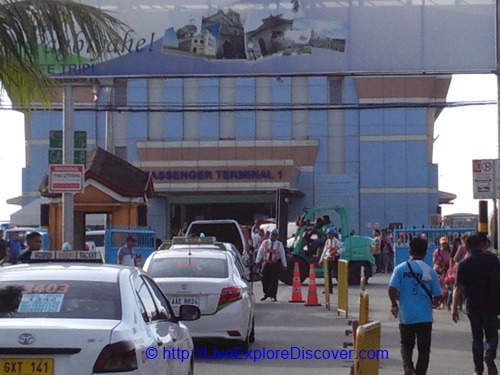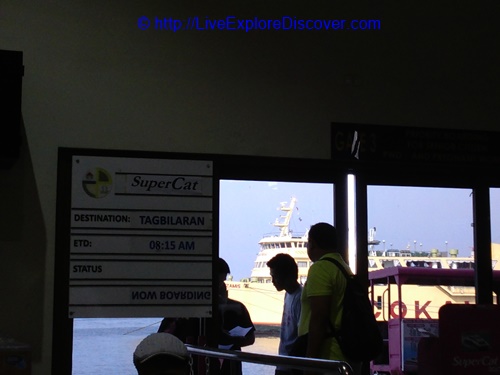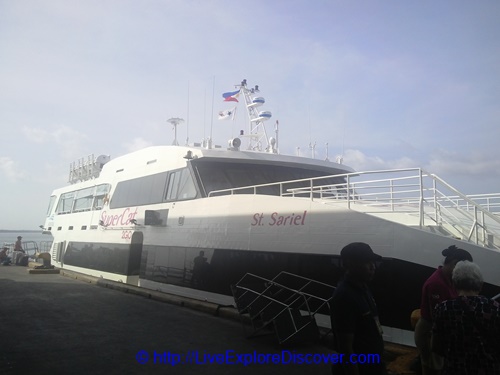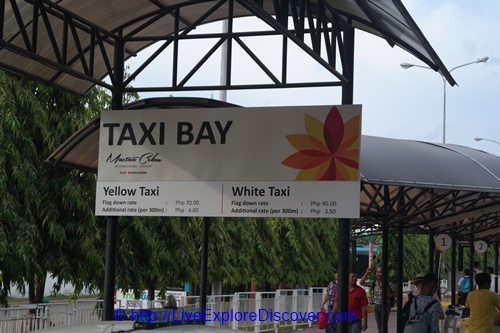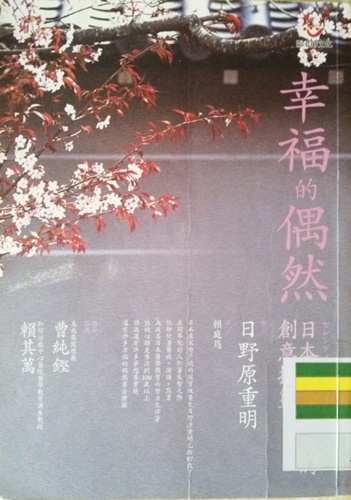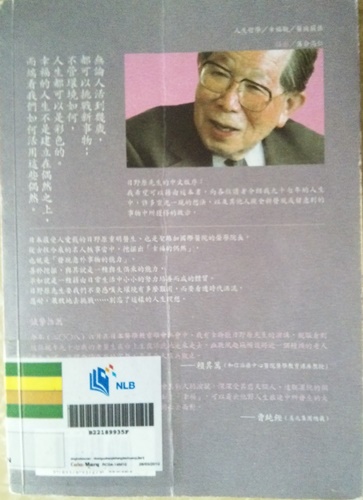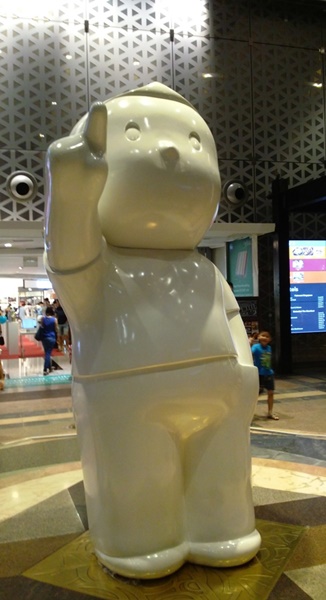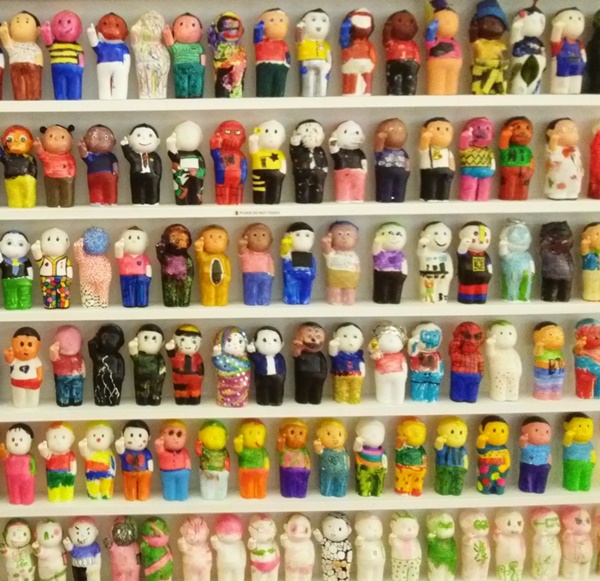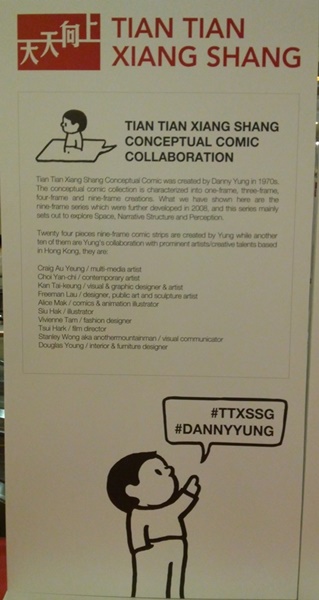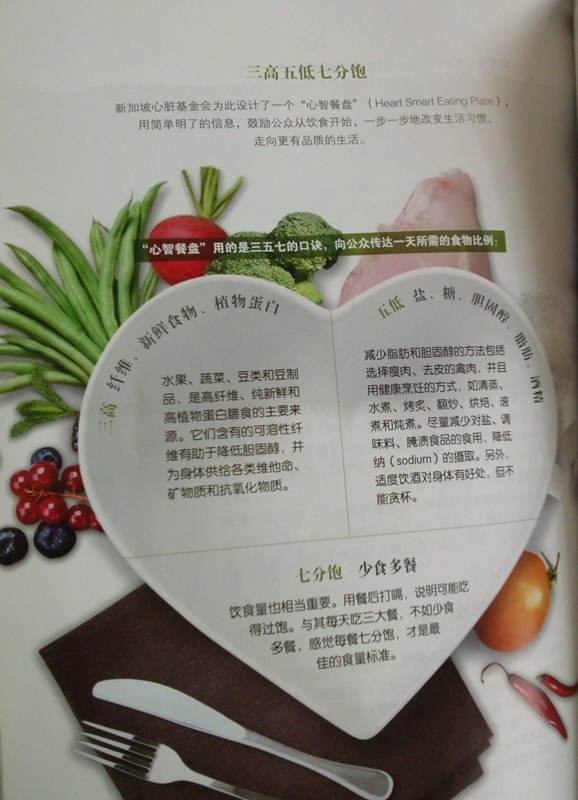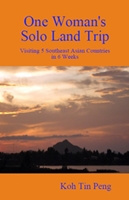When I mentioned to two friends GT and May that I was going to Cebu with my mum, they were puzzled why I chose this destination. Philippines usually don’t come up as a holiday destination for Singaporeans.
Why Cebu?
There were a few reasons why I picked Cebu. Firstly, I had not been to the Philippines even though I have travelled to majority of the Asean countries. Of the Asean countries – Brunei, Cambodia, Indonesia, Laos, Malaysia, Myanmar (Burma), Philippines, Thailand, Singapore, Vietnam – hooray, I’m now left with Brunei as I’m happy to say that I have just returned from a solo trip to Myanmar just a few days ago. Secondly, several countries could not be considered at that time in mid-July because the weather was not ideal. Countries like Taiwan, Hong Kong and China were experiencing typhoons, so options of affordable travel destinations were not plenty. Thirdly, air tickets were reasonable. For each person, the air ticket for Tigerair/Scoot was $242.54, inclusive of seat selection (2 x $7) and travel insurance ($29) for 10 kg of carry-on baggage.
Cebu is a province in Philippines in Region VII (Central Visayas). According to the Philippine Statistics Authority, as of June 2016, Cebu City was the most populous city in Cebu with 923,000 people.
Bohol Island has a population of 1.3 million based on 2015 census. You can visit it for a day trip or stay overnight.
Flying From Singapore to Cebu
The total flight time was 4 hours 50 minutes by Tigerair/Scoot [including a stopover at Kalibo (Boracay) for 40 minutes] from Singapore Changi Airport to Mactan International Airport on Mactan Island. There is no time difference between Cebu and Singapore. The exchange rate was 1 SGD = 35.5 peso when I changed some cash from a money changer in Singapore on 24 July 2017.
Cebu R Hotel Mabolo: Is this hotel good?
We stayed at Cebu R Hotel Mabolo, in Cebu City. I booked this hotel because of the many highly positive ratings given by guests, with many giving an 8 or higher rating. However, my experience was not fantastic and I rated the hotel a 5.8. I guess it depends very much on the room that you got. The hotel is located inside a small alley and around slums so it might not be safe if you decide to stay out late and walk back to the hotel. But if you travel by taxi, it’s fine. Breakfast is included and there are many choices for breakfast. The restaurant serves food until 10 pm. The food was delicious so on evenings when you choose not to walk to the main road for food, you can eat at the restaurant.
You can read my review of the hotel at www.booking.com under K_sg. In short, I think you should consider other hotels instead.

Top left clockwise: Cebu R Hotel Mabolo building – see the air pollution; Cebu R Hotel Mabolo Reception; Cebu R Hotel Mabolo Breakfast – one set with toast and egg and one set with pancake.
Our Cebu Trip Itinerary in Summary
Ours were a 6D5N trip from 26 July to 31 July 2017. As I was with mum, I chose a more relaxed pace, so that it would not be too tiring. We reached Cebu in the late afternoon so for the first day, we went straight to our hotel and had dinner at a Korean restaurant along the main road. For the second and third day, we spent time in the malls and visited Basilica del Santo Nino, Magellan’s Cross and the surroundings. For the fourth day, we visited Bohol Island and the fifth day was for the whale shark trip at Oslob. It was an afternoon flight on the sixth day.
6 reasons to visit Cebu
1. Basilica del Santo Nino and Magellan’s Cross
Marvel at the buildings and glass panels of Basilica del Santo Nino as well as the statues and beautiful roof drawings.
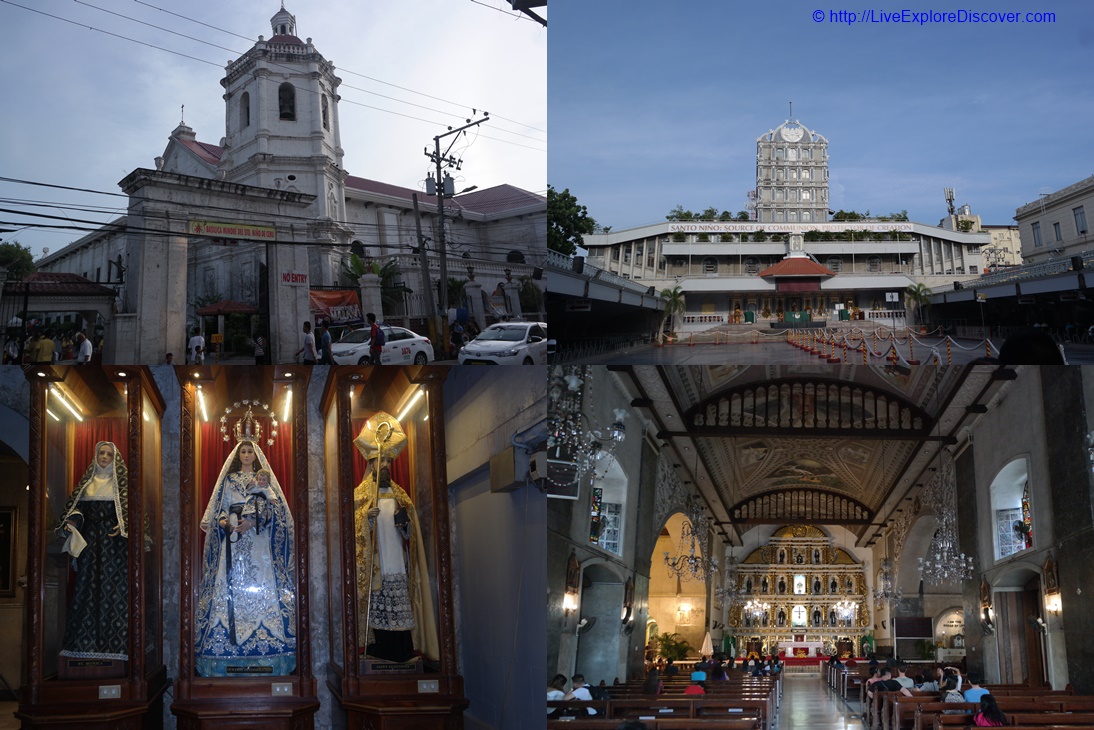
Basilica del Santo Nino
The Magellan’s Cross is just next to Basilica del Santo Nino.

Magellan Cross
Just next to both of the monuments, there was a group of Filipinos dancing near City Hall. We chanced upon the Farmer’s Market with vendors selling fresh vegetables and fruits on a Thursday.
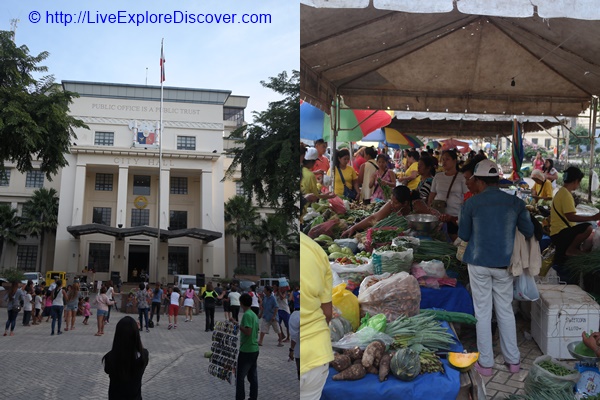
City Hall and Farmer’s Market
2. Shopping and eating at Ayala Center and SM City
Big malls in Cebu where you can eat, shop, and watch a movie. Both malls are much bigger than our usual heartland malls in Singapore. Need a bite? You are spoilt for choices with restaurants, food court and fast food outlets. If you need toiletries, you can get it from Watsons or the supermarkets. Money changers are available here and we book our day trip to Bohol Island at Ayala Center.
An unusual fast food outlet, ‘Chow King’ operates like a fast-food outlet. However, the ‘fast food’ are not burgers and fries but noodles and rice. The chocolate bao was the unusual item from our orders.
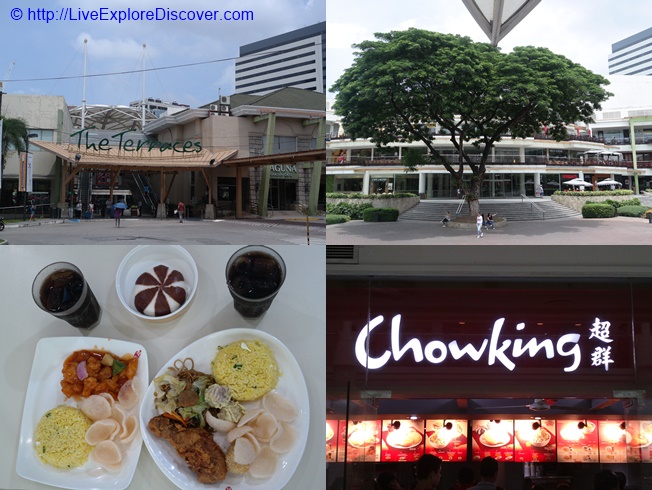
Top left clockwise: Ayala Center (2 pictures); Chow King Restaurant; Our lunch with the chocolate bao between the drinks.
3. Take a ferry to Bohol Island and let tasiers, the smallest primates, charm you
A 2-hour ferry will take you to Bohol Island. If you are prone to sea sickness, take some travel pills with you as the sea can become rough. It was a rough journey when we took the SuperCat Ferry in the morning and during the trip, many people were vomitting. It was alright for both mum and myself, until I walked to the toilet. While I was going to the toilet, the sea became rough, so using the toilet and walking back to my seat were difficult. The trip caused a mild headache but luckily, I didn’t vomit. So, do remember not to have a heavy breakfast before taking the ferry. The return trip at night was smooth though. The guy in our group at the whale shark trip told me that he and his girlfriend were taking Ocean Jet Ferries as website reviews mentioned that this ferry was more stable. So, you might want to check this out if you decide to go to Bohol Island. However, if you book through a tour agency like we do, I guess you might not have a choice of the ferries.
We booked the day trip to Bohol Island at Ayala Centre at one of the tour agencies. The original price was 7000 peso for both mum and myself but the manager in-charge gave us a discount and the final price was 6500 peso (SGD183). This tour included the ferry tickets as well as transportation by small van around the island’s attractions. It includes visiting tasiers sanctuary, lunch on river cruise, chocolate hills, butterfly sanctuary and church/museum.
Take a look at these tiny creatures, tasiers, which are just the size of your fist. They are nocturnal creatures, so when you visit, they are likely to be sleeping. We were not supposed to touch them or make loud noises as these actions would scare them. Grelims or Yoda (Star Wars) – that’s what they reminded me of.
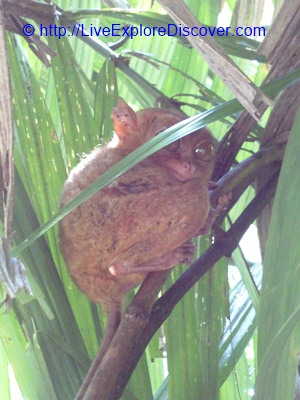
Tasier: This was one of the highlights of the Bohol tour.
4. Enjoy buffet lunch on a river cruise
There were food, entertainment and a slow river cruise. What more could we ask? This was the other highlight of the Bohol day trip. The food was delicious, and during the journey, we were not only entertained by the singer but also the guests who chose to sing for the rest of us. Before the cruise ended, local villagers performed some dances and you could donate if you like their performance. The cruise took about an hour.
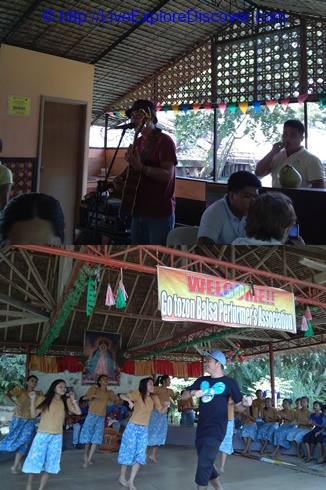
River Cruise: Entertainment on the cruise; One of the guests dancing with the villagers.
5. Whale Shark at Oslob (okay, this is controversial)
From websites, I read that the journey from Cebu City to Oslob takes around 5 hours. However, we set off in the early morning around 4.45 am and managed to reach the destination and had our breakfast at about 7.30 am. It could likely be due to the light traffic in the early morning.
We booked this trip through the hotel. I saved some money as my mum pointed out to a card in our hotel room desk. Upon a closer look, it was for shared tours. The cost for the whale shark trip was cheaper than the private tour price given by the hotel reception (ranging from 2850 peso to 4650 peso per person depending on itineraries) as this was a shared tour (ie, we will share the van with other people). If you don’t need private transport and guide and don’t mind sharing with others, do check with your hotel if there are shared tours available. This would help to save some money. I opted to stay in the boat and we paid 2500 peso (SG70) for each person. If you want to swim with the sharks, you would need to pay extra.
Initially, I was in a dilemma as participating in this tour means encouraging such tours to continue on. From what I read from the internet, the whale sharks originally passed by Oslob because of migration. But these sharks are now staying at Oslob because they have been feed by the fishermen. This is disrupting the migration patterns of the sharks and the feeding might have detrimental effects on the sharks as the sharks are not having their normal diet. The sharks might also become totally depended on being fed.
However, I decided to go ahead with the tour as this might be the only rare chance for my mum to have close encounters with whale sharks. I decided not to go into the water though. Seeing the huge groups of people, on afterthoughts, I feel it might be best not to go for the tour. Although people were warned that they should not touch the sharks and they would be fined if they do so, I saw some people trying to touch the sharks while swimming with them. It is likely that enforcement would be difficult, especially when they are large numbers of people in the water. If you do like to go for the tour, I think it would be best to just stay on the boat and not jump into the water to swim with the sharks, so as not to cause further harm to the sharks.
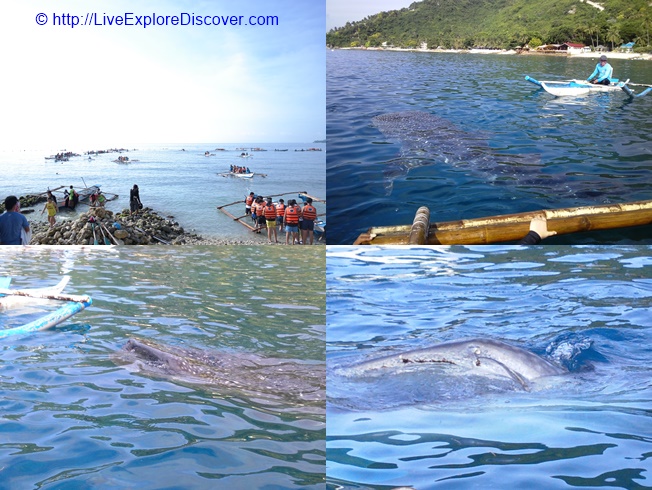
6. Fish spa in the cool waters at Tumalog Falls
Free fish spa, anyone? Dip your legs into the cool water and let the small fishes nibble at the dead skin on your feet. Put your hands in and the fishes will come too 🙂
Although fish spa is common in Singapore, I had never tried it before. So, I grabbed the chance to try it for free. It was ticklish when the fishes nibbled at your skin.
Just dipping my legs into the water let me know how cold the water was. The guy in our group went into the water and enjoyed a swim.
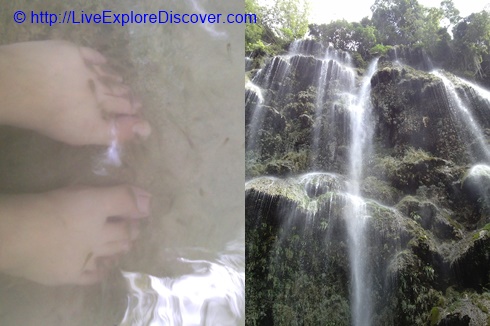
Tumalog Falls: Enjoy fish spa. That’s my feet 🙂 Waterfall.


